Every corner of Tehran city has been home to many crafts since the old ages. The remains of ancient Rey civilization to Qeytarieh Hills, the birth place of gray earthenware, are unique examples of Iran’s history and culture.
In the last two and a half centuries, the capital has showcased resplendent products of culture, art, and civilization, which provide the reasons to visit Tehran.
In addition to physical attributes, many great events throughout the course of Iranian history took place in this city. So it is worthy to introduce religious, historical, cultural, and artistic attractions of the metropolis to reveal its glory.
You can read about of the oldest and most famous gateways of Tehran, called Baq Melli, here.
Activities, taking place in Tehran in the past decades, have flourished the face of the city. Today, using artistic language to express unmatched beauties of Iran’s capital has become a vital necessity and led Tehran to turn into one of the world’s advanced and modern cities.

Representing Tehran’s attractions would paint a kind picture of high quality and elegant life for visitors which will prepare the ground for cultural development and the growth of Tehran’s tourism industry.
Find out about the most beautiful places and the cultural symbols of Tehran at our blog and enjoy visiting them if you are history enthusiast.
There’s also a post on the epitome of modern day Tehran or Abbas Abad Lands where you can enjoy nightlife in Tehran on our blog.
Shahid Motahari School
On the east side of Baharestan Square, a structure with eight minarets and a unique manifestation of Iranian-Islamic architecture welcomes the enthusiasts of learning religious sciences. Since a century ago, the building, named Shahid Motahari School, opened doors for who are interested in religious sciences. Shahid Motahari School was bequeathed in 1879 by Mirza Hosseinkhan Sepahsalar, the Chancellor of Nasser al-Din Shah Qajar, who dedicated a part of his garden, called Baharestan Garden, to build a seminary on it. He spent his personal assets and paternal inheritances for the construction of the school’s building.
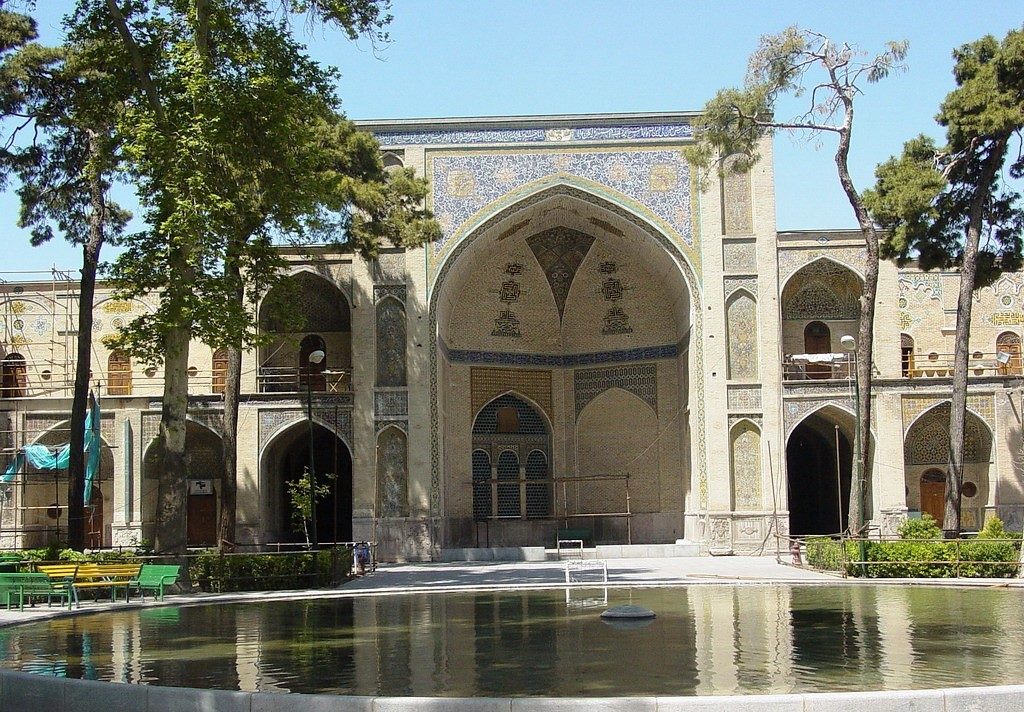
The construction of Nasserieh School, the old name of the seminary, was completed in 1882. However, the shape of school’s dome was influenced by the Ottoman architecture, the architecture of the dome is not exactly identical to Ottoman mosques and it demonstrates the architecture of Jameh Mosque and Chahar Bagh School in Isfahan, and Hagia Sophia in Istanbul.
Nasserieh School has welcomed seminarians since 1895. Three northern entrances of the school’s six ones have been blocked by the Library of Parliament’s building. Now, only entrances consisting of western (the main entrance), eastern (women entrance), and southern are open to the students.
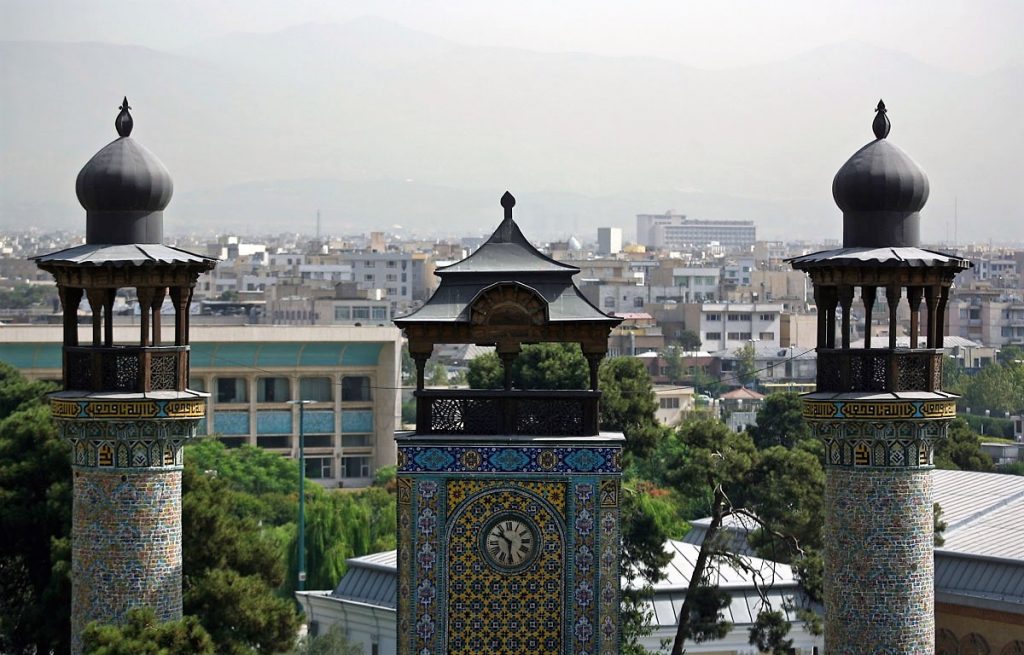
The vestibules of the entrances lead the visitors to the main square-shaped courtyard of the complex which is surrounded by four patios at each cardinal direction. The yard with a round pond at the middle and surrounding parterres, on short notice, puts the visitors in the mood for learning religious sciences and separates them from crowded Baharestan Square.
A clock, located on a pedestal over the northern patio and between the minarets, was built in 1880 in France to note the importance of time to the seminarians. Summer yard or rotunda of the school is the biggest part of the complex which is an example of innovation in Qajar architecture. Winter yard is also located behind the eastern patio. One of the salient characteristics of this part of the school is 24 monolithic stone columns which have linked the vaults. Terraces, porches, chambers and Chehel Shir Hall are the other parts of the complex. The Nasserieh school which had been called Mosque and Sepahsalar School for a time in history was named Shahid Motahari School after the victory of Islamic Revolution in 1979.
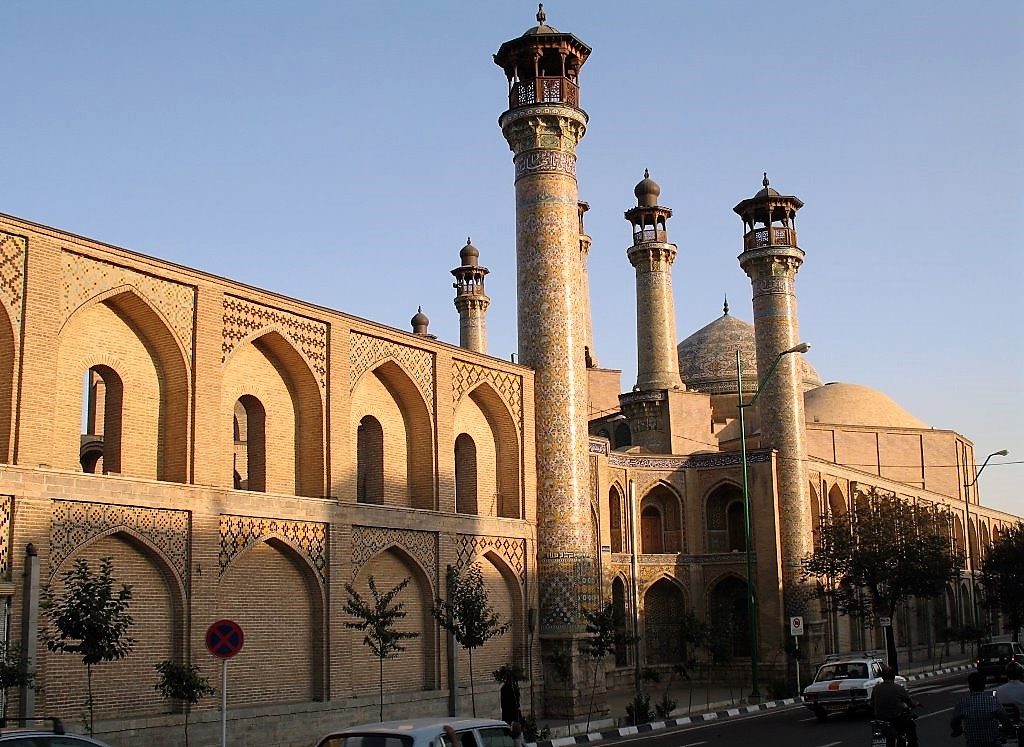
Click here for directions to Shahid Motahari School.
Shams ol-Emareh
Today Tehran is the city of high-rises, but the tallest edifice in Nasser al-Din Shah’s era was Shams ol-Emareh which is a five-story mansion, on top of which once people could see all alleys, byroads, even valleys and waterfalls flowing down between the mountains around Tehran. It had been a symbol of Tehran before the National Garden Entrance was built. Now, its face has been concealed behind the city’s towers and only pedestrians in Panzdah Khordad Street and tourists visiting Golestan Palace Museum can behold it. With a height of 35 meters, the mansion appeared so high in the Qajar era, as if they could attain the sun on top of it which is why it is called Shams ol-Emareh (Edifice of the Sun).
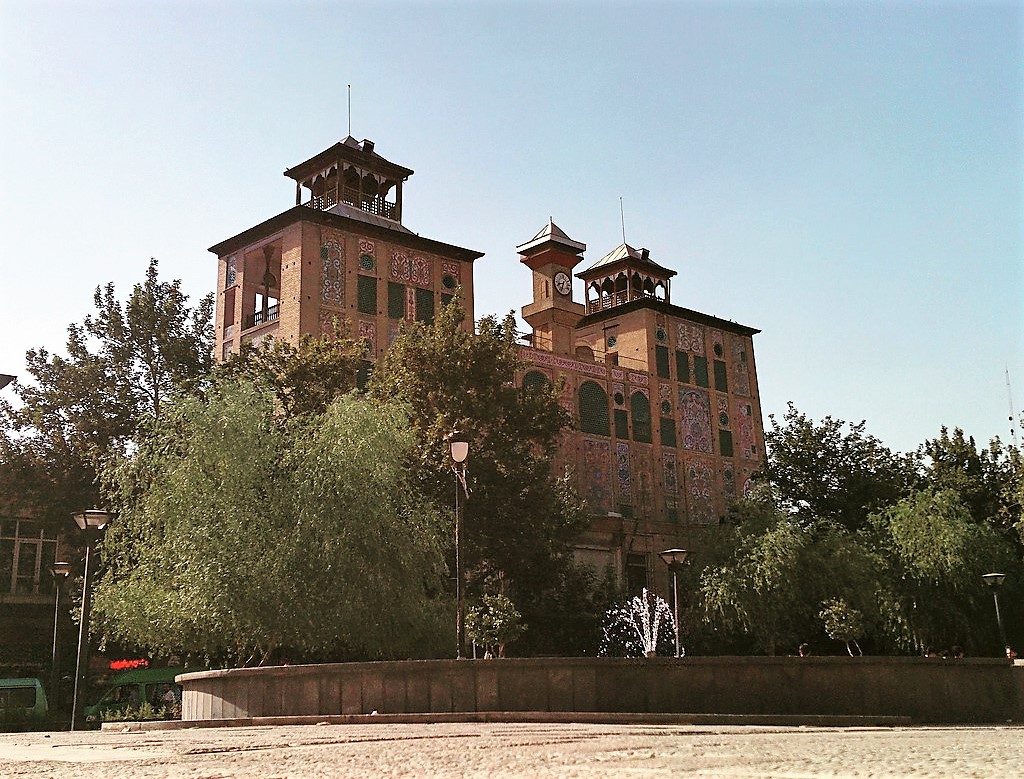
Shams ol Emareh, located in the east corner of the Golestan Palace, was built following an order by Nasser al-Din Shah Qajar. Since the Shah had willed to have a panoramic view of the capital from his palace, he charged Moayyer ol-Mamalek with constructing of a European multi-story building. So this is how the construction of the Edifice of the Sun began in 1865 and completed two years later.
Golestan Palace was founded by Safavid kings (1501-1722 AD) and survived during the following dynasties and even hosted Karim Khan Zand (1750-1779 AD) for a while. Qajar kings (1796-1925 AD), who had selected Tehran as their capital, deemed the palace worthy of their royal life and planned for making it more majestic.

Golestan Palace includes mansions and buildings such as Marble Throne (Takht-e Marmar), Karim Khani Nook (Khalvat-e Karim Khani), Pond House (Howz Khaneh), Picture House or Gallery (Negar Khaneh), Brilliant Hall (Talar-e Brelian), Ivory Hall (Talar-e Adj), Library, Edifice of the Sun (Shams ol-Emareh), the Windcatcher Building (Emarat-e Badgir) and its pond; Diamond Hall (Talar-e Almas); White Palace (Kakh-e Abyaz), Tent House (Chador Khane), etc. The buildings each of which represents a part of the Qajar era architecture, but Shams ol-Emareh, shines like a jewel on the ring because of its height and decorations.

The Edifice of the Sun (Shams ol Emareh) with three stories and two towers on top, is a fusion of Persian and Western architecture. In addition to the stories, the Clock Tower, high porches, and beautiful wind catchers made the building look like European palaces. The sound of its clock, which was presented by Queen Victoria to Nasser al-Din Shah, told time to Tehranis for a long time, just like the Big Ben in London. These features, along with mirror works, paintings, and fillets of Shams ol-Emareh walls and ceilings and the use of cast iron in upper-floor posts and safeguards have made the building distinct from its contemporary buildings.
Address: Tehran Province, Tehran, St ark sq, Panzdah-e-Khordad, Iran
Browsing Category:Iran Travel Guide Uncategorized

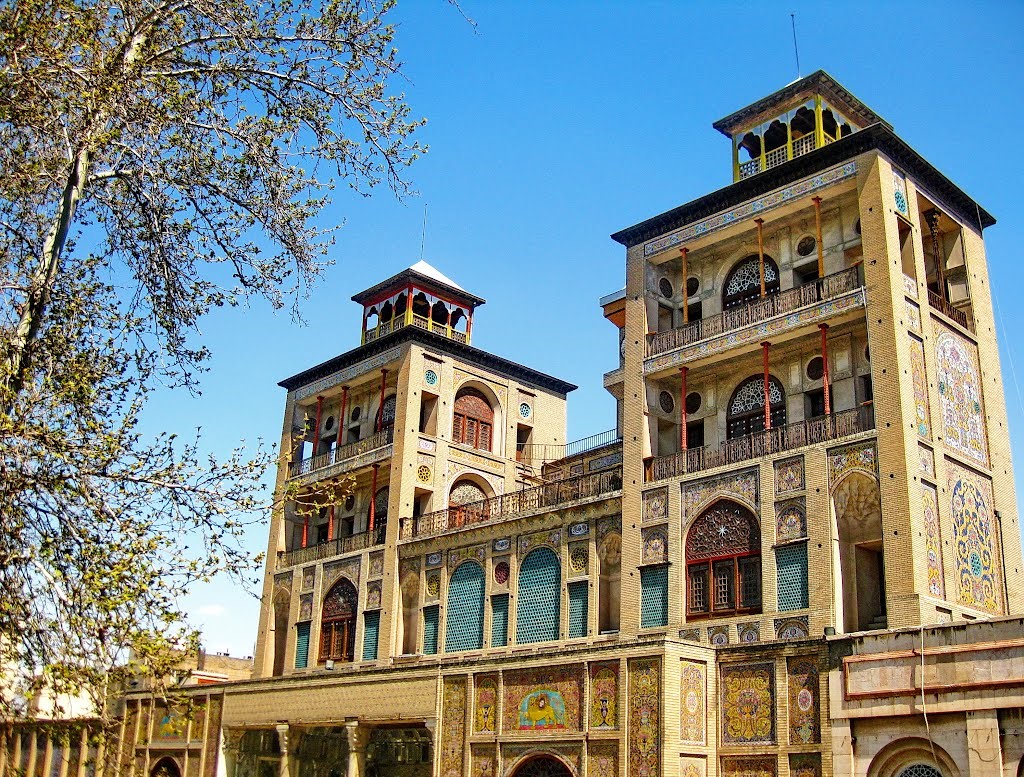
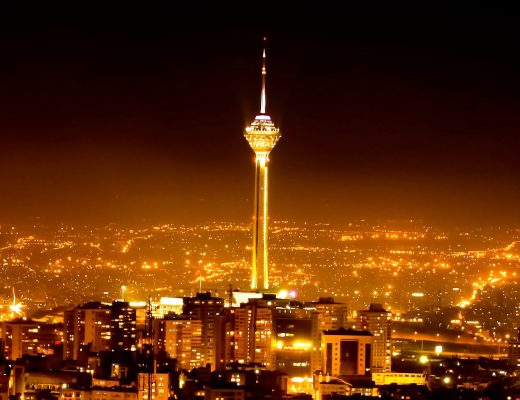
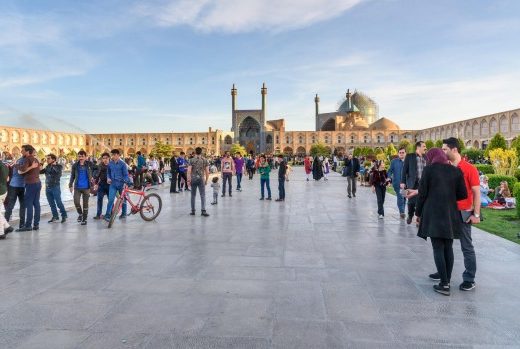
No Comments